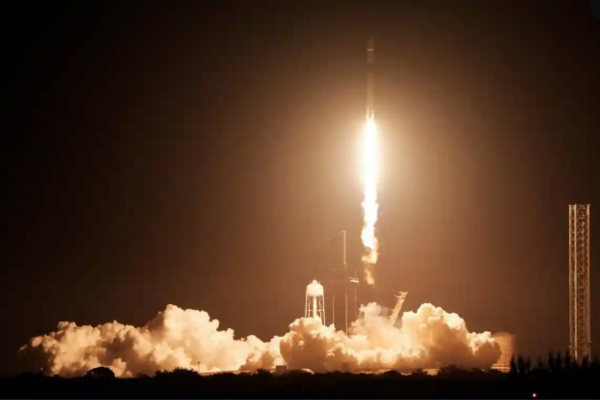

Every journey starts with a first step. No one did the math on how many steps it took to travel the 1 million kilometers or 680,000 miles for the Odysseus spacecraft to travel to the moon’s surface. Still, members of IAM District 166 in central Florida were involved in many of those steps to get there.
“Our members have vital roles in each launch. Be it SpaceX, ULA, or these newcomer rocketeers – if Kennedy Space Center shoots it, they make it happen,” said Directing Business Representative IAM District 166 Kevin DiMeco. “These first steps of progress in the Commercial Lunar Payload Services (CLPS) program are just a start. The build up to the Artemis Moon missions means steady work for this District.”
DiMeco pointed out key IAM players in the successful February 15th launch of Innovative Machines’ IM-1 Odysseus spacecraft:
Watch the IAM work that launches the IM-1 Odysseus here.
The first machine, owned and built by a private company, to land “softly” on the moon has twelve payloads on board, but it carried the work of thousands of IAM members who built the components and maintained the launch facilities. Neil Armstrong had one small step for man, but the Amentum Kennedy Space Center workers and various subcontractors on Florida’s Space Coast are working for all humanity.
The pace of rocket launches is picking up. Last year, the U.S. launched 72 space vehicles out of Kennedy. The reported goal is 300 launches a year by 2031.
“Space is a competition these days,” said IAM Southern Territory General Vice President Craig Martin. “And the fight to keep America on top in space is worthy of a skilled unionized workforce. That means huge growth in an industry where our members already have strong ties.”
Machinists also do important space industry jobs like:
Days after landing on the moon, engineers at Innovative Machines discovered that Odysseus had tipped over on its side sometime during the landing, breaking a leg of the lander. Most of the data and experiments will be completed, but the team waits to see if the spacecraft’s batteries survive an arctic cold 17 day long “moon night”, and continues transmitting data in three or four weeks. But Odysseus survived the “soft” landing and lasted long enough to check off accomplishments, which at least five other private commercial missions have failed to do in the past 18 months.
The work doesn’t stop. And IAM members who work at the bleeding edge of space technology on Florida’s Space Coast and throughout the U.S. know that these tiny steps – even missteps, are the costs for the giant leaps forward in exploring space.